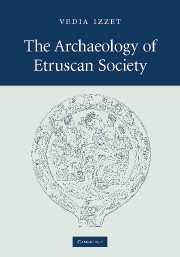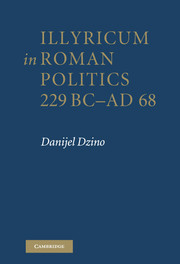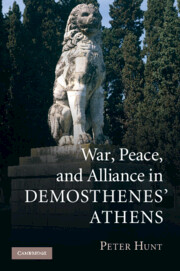Refine search
Actions for selected content:
23989 results in Ancient history
Acknowledgments
-
- Book:
- Food and Identity in Early Rabbinic Judaism
- Published online:
- 06 July 2010
- Print publication:
- 17 May 2010, pp ix-xii
-
- Chapter
- Export citation
Selected Index of Modern Scholars
-
- Book:
- Food and Identity in Early Rabbinic Judaism
- Published online:
- 06 July 2010
- Print publication:
- 17 May 2010, pp 220-223
-
- Chapter
- Export citation
2 - Jewish Identity
-
- Book:
- Food and Identity in Early Rabbinic Judaism
- Published online:
- 06 July 2010
- Print publication:
- 17 May 2010, pp 35-102
-
- Chapter
- Export citation
3 - Jewish Male Identity
-
- Book:
- Food and Identity in Early Rabbinic Judaism
- Published online:
- 06 July 2010
- Print publication:
- 17 May 2010, pp 103-137
-
- Chapter
- Export citation
Index of Pre-Modern Sources
-
- Book:
- Food and Identity in Early Rabbinic Judaism
- Published online:
- 06 July 2010
- Print publication:
- 17 May 2010, pp 212-219
-
- Chapter
- Export citation
Abbreviations
-
- Book:
- Food and Identity in Early Rabbinic Judaism
- Published online:
- 06 July 2010
- Print publication:
- 17 May 2010, pp xiii-xiv
-
- Chapter
- Export citation
Bibliography
-
- Book:
- Food and Identity in Early Rabbinic Judaism
- Published online:
- 06 July 2010
- Print publication:
- 17 May 2010, pp 193-208
-
- Chapter
- Export citation
Introduction
-
- Book:
- Food and Identity in Early Rabbinic Judaism
- Published online:
- 06 July 2010
- Print publication:
- 17 May 2010, pp 1-14
-
- Chapter
- Export citation
1 - Realia
-
- Book:
- Food and Identity in Early Rabbinic Judaism
- Published online:
- 06 July 2010
- Print publication:
- 17 May 2010, pp 15-34
-
- Chapter
- Export citation

The Archaeology of Etruscan Society
-
- Published online:
- 10 May 2010
- Print publication:
- 13 December 2007

Illyricum in Roman Politics, 229 BC–AD 68
-
- Published online:
- 05 May 2010
- Print publication:
- 21 January 2010

Race and Citizen Identity in the Classical Athenian Democracy
-
- Published online:
- 05 May 2010
- Print publication:
- 15 February 2010

War, Peace, and Alliance in Demosthenes' Athens
-
- Published online:
- 05 May 2010
- Print publication:
- 28 January 2010
Frontmatter
-
- Book:
- One God
- Published online:
- 20 May 2010
- Print publication:
- 29 April 2010, pp i-iv
-
- Chapter
- Export citation
2 - Pagan monotheism as a religious phenomenon
-
-
- Book:
- One God
- Published online:
- 20 May 2010
- Print publication:
- 29 April 2010, pp 16-33
-
- Chapter
- Export citation
9 - Further thoughts on the cult of Theos Hypsistos
-
-
- Book:
- One God
- Published online:
- 20 May 2010
- Print publication:
- 29 April 2010, pp 167-208
-
- Chapter
- Export citation
Contents
-
- Book:
- One God
- Published online:
- 20 May 2010
- Print publication:
- 29 April 2010, pp v-vi
-
- Chapter
- Export citation
4 - The case for pagan monotheism in Greek and Graeco-Roman antiquity
-
-
- Book:
- One God
- Published online:
- 20 May 2010
- Print publication:
- 29 April 2010, pp 53-81
-
- Chapter
- Export citation
6 - The price of monotheism: some new observations on a current debate about late antiquity
-
-
- Book:
- One God
- Published online:
- 20 May 2010
- Print publication:
- 29 April 2010, pp 100-111
-
- Chapter
- Export citation
7 - Megatheism: the search for the almighty god and the competition of cults
-
-
- Book:
- One God
- Published online:
- 20 May 2010
- Print publication:
- 29 April 2010, pp 112-140
-
- Chapter
- Export citation
